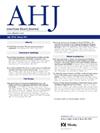Cardiometabolic Risk Reduction with Digital Twinning: A Narrative Review
IF 3.5
2区 医学
Q1 CARDIAC & CARDIOVASCULAR SYSTEMS
引用次数: 0
Abstract
Digital twin (DT) technology—real-time, data-driven virtual models of individuals—offers transformative potential in managing cardiometabolic-based chronic disease (CMBCD), a progressive continuum including abnormal adiposity (ABCD), hypertension (HBCD), dysglycemia (DBCD), dyslipidemia (LBCD), residual risk states, and cardiovascular diseases (CVDs). Type 2 diabetes (T2D), central in this cascade, requires individualized, integrative strategies where DT may serve as a precision-medicine tool. A systematic search across PubMed, Embase, Web of Science, Scopus, and Cochrane identified 12 eligible studies. Due to data duplication (five studies using the same cohort) and lack of homogeneity, meta-analysis was not feasible, prompting a narrative synthesis. DT-guided interventions were categorized across the CMBCD spectrum: (1) ABCD – DT reduced visceral fat and lowered BMI by 1.8 kg/m²; (2) DBCD – HbA1c dropped up to 1.8%, 89% achieved glycemic targets, fewer medications were used, time-in-range improved from 69.7% (±30.7) to 86.9% (±24.5), time-above-range decreased (p<0.001), and time-below-range slightly increased (p<0.001); (3) HBCD – normal blood pressure cases increased from 108 (46.4%) to 147 (63.1%), outperforming standard care, with 30 patients stopping antihypertensive drugs; (4) LBCD – triglycerides dropped 18.8% and HDL increased 6.8% (p<0.001); (5) Residual risk – DT improved liver fat/fibrosis (via imaging and fibrosis scores), and predicted CKD with area under the curves (AUCs) range from 0.80 to 0.86, retinopathy (AUC: 0.84), and cataracts (AUC: 0.93); (6) CVD outcomes – early trials show improved risk factors and medication de-escalation. DT appears promising for cardiometabolic risk management and personalized T2D care. Broader validation in diverse populations and refined implementation strategies are needed for clinical integration.
数字孪生降低心脏代谢风险:叙述性回顾
数字孪生(DT)技术——实时、数据驱动的个人虚拟模型——在管理以心脏代谢为基础的慢性疾病(CMBCD)、包括异常肥胖(ABCD)、高血压(HBCD)、血糖异常(DBCD)、血脂异常(LBCD)、剩余危险状态和心血管疾病(cvd)在内的进行性连续体方面具有变革性潜力。2型糖尿病(T2D)是这一级联的中心,需要个性化的综合策略,其中DT可以作为精准医疗工具。通过PubMed、Embase、Web of Science、Scopus和Cochrane进行系统搜索,确定了12项符合条件的研究。由于数据重复(五项研究使用相同的队列)和缺乏同质性,荟萃分析不可行,促使叙事综合。ct引导的干预措施在CMBCD谱上进行了分类:(1)ABCD - DT减少了内脏脂肪,降低了1.8 kg/m²的BMI;(2) DBCD - HbA1c下降1.8%,89%达到血糖目标,使用的药物较少,范围内时间从69.7%(±30.7)改善到86.9%(±24.5),范围上时间减少(p<0.001),范围下时间略有增加(p<0.001);(3) HBCD -血压正常病例从108例(46.4%)增加到147例(63.1%),优于标准治疗,其中30例患者停用降压药;(4) LBCD -甘油三酯下降18.8%,HDL升高6.8% (p < 0.001);(5)残余风险- DT改善肝脏脂肪/纤维化(通过影像学和纤维化评分),并预测曲线下面积(AUC)范围为0.80至0.86的CKD,视网膜病变(AUC: 0.84)和白内障(AUC: 0.93);(6)心血管疾病结局——早期试验显示危险因素改善,药物缓解。DT在心脏代谢风险管理和个性化T2D护理方面似乎很有前景。临床整合需要在不同人群中进行更广泛的验证和改进的实施策略。
本文章由计算机程序翻译,如有差异,请以英文原文为准。
求助全文
约1分钟内获得全文
求助全文
来源期刊

American heart journal
医学-心血管系统
CiteScore
8.20
自引率
2.10%
发文量
214
审稿时长
38 days
期刊介绍:
The American Heart Journal will consider for publication suitable articles on topics pertaining to the broad discipline of cardiovascular disease. Our goal is to provide the reader primary investigation, scholarly review, and opinion concerning the practice of cardiovascular medicine. We especially encourage submission of 3 types of reports that are not frequently seen in cardiovascular journals: negative clinical studies, reports on study designs, and studies involving the organization of medical care. The Journal does not accept individual case reports or original articles involving bench laboratory or animal research.
 求助内容:
求助内容: 应助结果提醒方式:
应助结果提醒方式:


